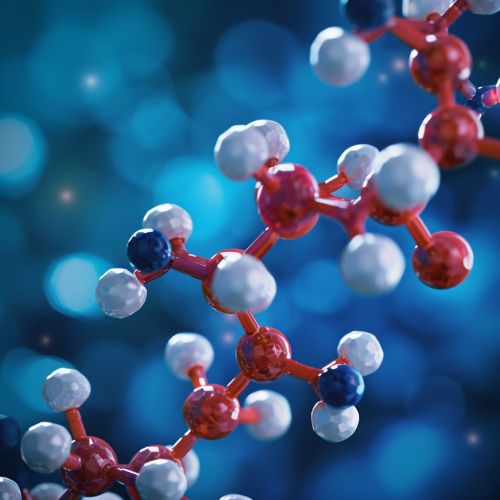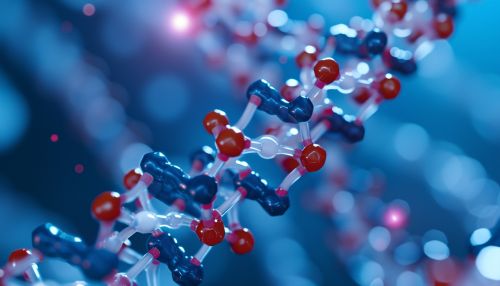Acetylcholinesterase
Introduction
Acetylcholinesterase (AChE) is a serine hydrolase enzyme that plays a critical role in the nervous system. It is responsible for the termination of synaptic transmission by rapid hydrolysis of the neurotransmitter acetylcholine into choline and acetic acid. This process is essential for the proper functioning of the nervous system, including muscle contraction, heart rate, and cognition.


Structure
Acetylcholinesterase is a globular protein, composed of a single polypeptide chain. It has a deep and narrow active site gorge, which is approximately 20 angstroms deep. The active site of the enzyme is located at the bottom of this gorge and contains a catalytic triad that includes the amino acids serine, histidine, and glutamate. The structure of AChE is highly conserved across different species, indicating its crucial role in biological systems.
Function
The primary function of acetylcholinesterase is to break down acetylcholine, a neurotransmitter that sends signals in the nervous system. By hydrolyzing acetylcholine, AChE terminates synaptic transmission and allows the nerve cell to return to its resting state. This rapid and efficient process is vital for the proper functioning of the nervous system and is essential for activities such as learning, memory, and muscle contraction.
Mechanism of Action
Acetylcholinesterase hydrolyzes acetylcholine by a two-step process. First, the enzyme binds to the acetylcholine molecule in the synaptic cleft. The ester bond of acetylcholine is then cleaved by a nucleophilic attack by the serine residue of the enzyme, forming an acyl-enzyme intermediate and releasing choline. In the second step, water molecules in the active site gorge hydrolyze the acyl-enzyme intermediate, releasing acetic acid and regenerating the free enzyme.
Inhibitors and Activators
Acetylcholinesterase can be inhibited or activated by various substances. Inhibitors of AChE, such as organophosphates and carbamates, are often used as pesticides and nerve gases. These inhibitors bind to the active site of the enzyme and prevent it from hydrolyzing acetylcholine, leading to an accumulation of acetylcholine in the synaptic cleft and causing overstimulation of the nervous system. On the other hand, activators of AChE increase the enzyme's activity and can be used to treat conditions associated with decreased acetylcholine levels, such as myasthenia gravis and Alzheimer's disease.
Clinical Significance
Abnormalities in acetylcholinesterase activity can lead to various neurological disorders. For instance, decreased AChE activity can result in excessive acetylcholine accumulation, leading to overstimulation of the nervous system and symptoms such as muscle weakness, fatigue, and cognitive impairment. Conversely, increased AChE activity can lead to decreased acetylcholine levels, resulting in conditions such as myasthenia gravis and Alzheimer's disease. Therefore, acetylcholinesterase is a significant target for the treatment of various neurological disorders.
